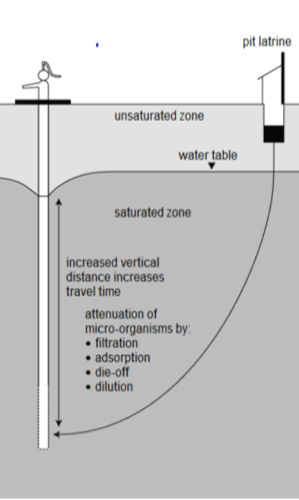“Water Sanitation and Hygiene” (WASH) is an essential component of the development tool of IHS. Our company imposes, as a precondition for new clients to be selected, to include a safe water supply and a hygienic latrine in their building designs.
Why is this so important?
Housing is an important area of concern for public health. The home is important for psycho-social reasons as well as a protection against the elements. But it can also be the source of wide range of hazards. IHS acknowledges the health problems associated with (a) poor housing and home conditions, (b) inadequate water supply and sanitation.In 2015 only 61% of the population in Bangladesh used improved sanitation. This means that more than 60 million people do not have access to hygienic sanitation (WHO, 2016).
(a) IHS Quality Houses have a great influence on the physical health of the inhabitants. The prevalence of several diseases diminishes with a quality house. For instance: many diseases (even deaths) are attributable to the direct effects of “COLD” so improved insulation is an important factor. Think of ARI (Acute Respiratory Infections, like pneumonia), a leading cause of Under-5 Mortality Rate (Children below the age of 5 years - in Bangladesh the incidence is 46/1.000 live births). On the other hand, excessive heath due to poorly insulated houses, increases the mortality of elderly. Research from the WHO about climate change predicts an increase, even if emissions drop rapidly, from 60 days of ‘heath wave’ in 1990 to 120 days of ‘heath wave’ by 2100. The prediction with continuing high emissions is 300 days of ‘heath wave’ by 2100 (WHO, 2015a). Aside of this, humidity, damp and mould (fungus) have a negative influence on health. Furthermore, poorly ventilated houses, where sunlight does not penetrate, are an excellent biotope for airborne diseases like tuberculosis. Indeed, the “mycobacteria tuberculosis” survives for a long time in poorly ventilated rooms and UV-sunlight cannot kill the bacteria! (UV light reduces the spread of tuberculosis by 70%)
(b) Inadequate water supply and sanitation.
International studies show that many communicative diseases can be prevented by safe water provision and good sanitation.
We know that the majority of pathogens effecting humans are derived from feaces and are transmitted by the feacal-oral route through a variety of ways, including water, food, flies and poor personal hygiene. Pathogens transmitted through drinking water include Bacteria (like C.coli, E.coli, Legionella, Salmonella, Shygella), Viruses and Protozoa and cause several diseases like dysentery, diarrhea. Diarrhea is another leading cause of deaths of children under-5 in Bangladesh, the incidence is 62/1.000 (WHO, 2015b).
Hygienic Sanitation prevents bacterial contamination of the drinking water and the environment. IHS-engineers, together with the client, consider a minimum distance to the aquafer.
The minimum distance depends on:
(a) the soil composition;
the depth to the aquafer is mostly low (<5 meter) in silt-clay ground, which raises a significant risk that micro-organism may reach the water-table at unacceptable levels.
(b) the depth of the water source:
Many families have the ‘shallow well’ but the depth mostly exceeds 60ft.
The combination of these 2 elements determine the optimal location of the sanitation.
With respecting a sufficient distance between sanitation and water supply, the problem is already ‘half-solved’.
Studies point out that “travel days”, needed by bacteria, virus, protozoa, Helminth pathogens to reach the aquafer from the contamination spot are the detrimental factor; 50 days are considered safe, 25 days acceptable. The deeper the well, the less change that contamination will occur. (DFID study, “Guidelines for assessing the risk to groundwater from on-site sanitation” (Susana, 2015)
Now, the 2

This analysis shows the impressive changes in sanitation for 1.820 finished houses.
- - In phase 1(2013) and phase 2 (2014) 44% of the houses used an “offset latrine”
- - From phase 3 on, IHS imposed these minimum norms and the number of “offset latrines” increased to 74%
- - For phase 4 and phase 5 the preliminary results are respectively 72% and 71% “offset latrines”. Still 16% of the installations are not yet finished, (registered as “unknown”). Most of them will be offset latrines, so we expect that total percentages will near 100%.
IHS installed for 2600 houses safe water access and hygienic sanitations. The company focuses on 100% offset latrines.


